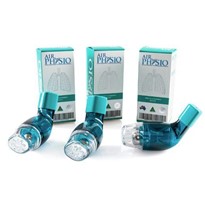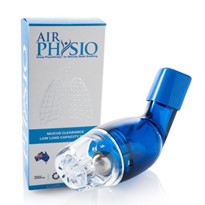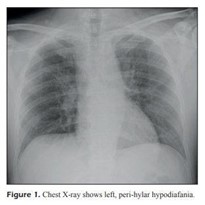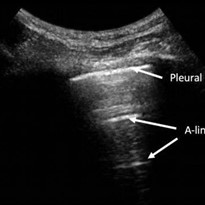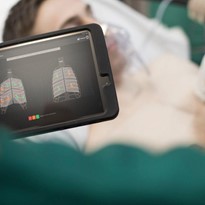Dear Editor,
Up to 24 February 2020, there have been 77,269 ofcially reported confrmed cases of 2019 novel corona virus (SARS-CoV-2) infection in China. As lung abnormalities may develop before clinical manifestations and nucleic acid detection, experts have recommended early chest computerized tomography (CT) for screening suspected patients [1]. Te high contagiousness of SARSCoV-2 and the risk of transporting unstable patients with hypoxemia and hemodynamic failure make chest CT a limited option for the patient with suspected or established COVID-19. Lung ultrasonography gives the results that are similar to chest CT and superior to standard chest radiography for evaluation of pneumonia and/ or adult respiratory distress syndrome (ARDS) with the added advantage of ease of use at point of care, repeatability, absence of radiation exposure, and low cost [2].
In this report, we summarize our early experience with lung ultrasonography for evaluation of SARS-CoV-2 infection in China with the intent of alerting frontline intensivists to the utility of lung ultrasonography for management of COVID-19.
Ultrasonographic features of nCoV pneumonia
We performed lung ultrasonography on 20 patients with COVID-19 using a 12-zone method [3].
Characteristic fndings included the following:
1. Tickening of the pleural line with pleural line irregularity;
2. B lines in a variety of patterns including focal, multifocal, and confuent;
3. Consolidations in a variety of patterns including multifocal small, non-translobar, and translobar with occasional mobile air bronchograms;
4. Appearance of A lines during recovery phase;
5. Pleural efusions are uncommon.
The observed patterns occurred across a continuum from mild alveolar interstitial pattern, to severe bilateral interstitial pattern, to lung consolidation. Table 1 summarizes typical lung ultrasonography fnds in patients with COVID-19 respiratory disease in comparison with chest CT findings. Typical lung ultrasonography images are shown in the supplementary material (Supplementary Fig. 1.)
The findings of lung ultrasonography features of SARSCoV-2 pneumonia/ARDS are related to the stage of disease, the severity of lung injury, and comorbidities. The predominant pattern is of varying degrees of interstitial syndrome and alveolar consolidation, the degree of which is correlated with the severity of the lung injury. A recognized limitation of lung ultrasonography is that it cannot detect lesions that are deep within the lung, as aerated lung blocks transmission of ultrasonography, i.e., the abnormality must extend to the pleural surface to be visible with on ultrasonography examination. Chest CT is required to detect pneumonia that does not extend to the pleural surface.
Based upon our experience, we consider that lung ultrasonography has major utility for management of COVID-19 with respiratory involvement due to its safety, repeatability, absence of radiation, low cost and point of care use; chest CT may be reserved for cases where lung ultrasonography is not sufficient to answer the clinical question. We find there is utility of lung ultrasonography for rapid assessment of the severity of SARS-CoV-2 pneumonia/ARDS at presentation, to track the evolution of disease, to monitor lung recruitment maneuvers,
to guide response to prone position, the management of extracorporeal membrane therapy, and for making decisions related to weaning the patient form ventilatory support.











